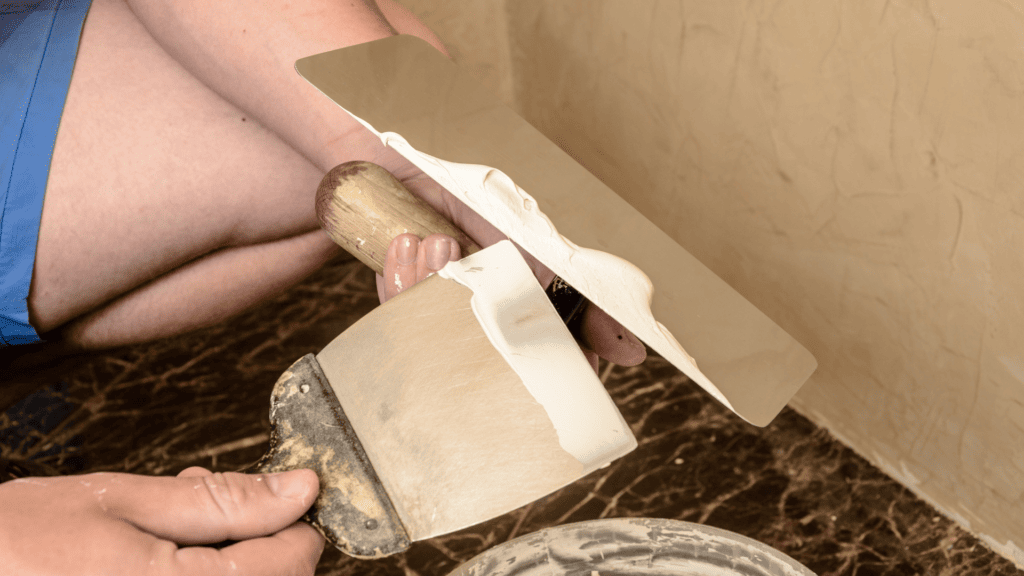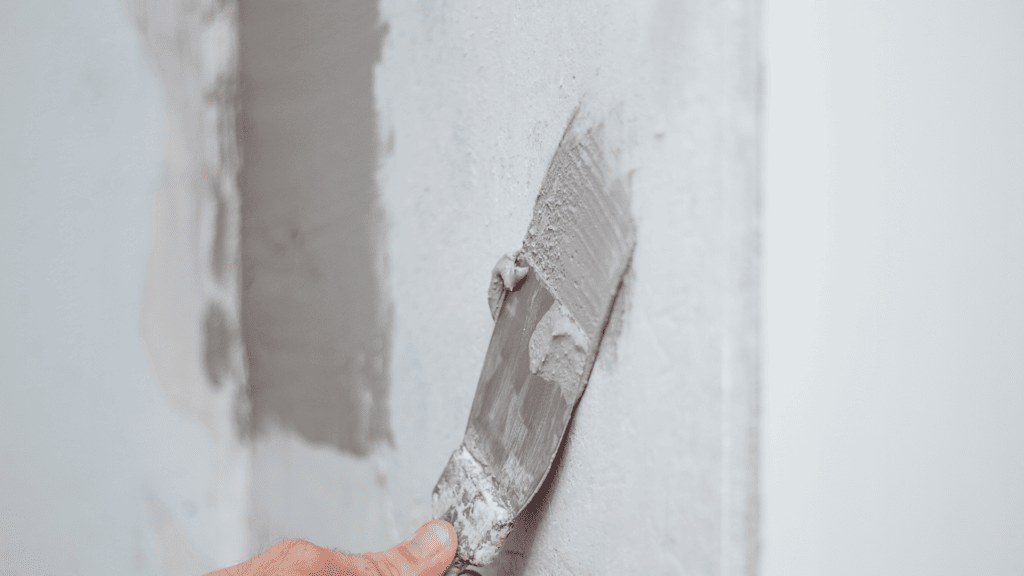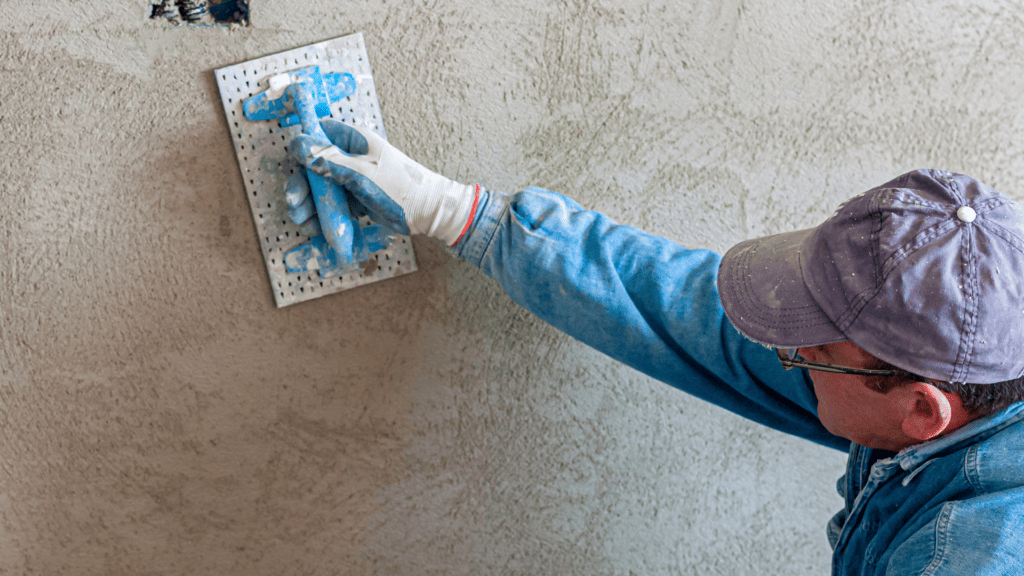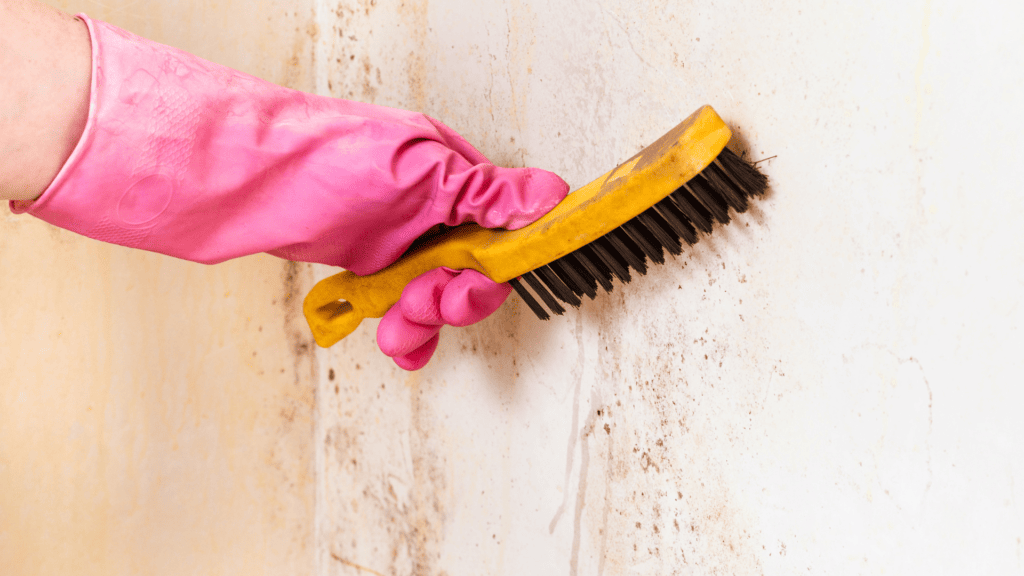Where traditional skills and contemporary taste meet: in the world of Venetian plaster, in this fascinating introduction, we'll investigate the allure of Venetian plaster by looking at its origins, components, and recent renaissance in fashion. Learn the techniques used to create this high-end wall treatment that has caught the attention of decorators and homeowners alike. Learn about Venetian plaster's history, techniques, and beauty and how it can be used to change your home completely.
Venetian Plaster Is Defined.
Marble plaster, polished plaster, marmorino and stucco plaster are just a handful of the various names for Venetian plaster. These coatings have been around for nearly 5,000 years; you guessed it, they have their origins in the sea!
Lime putty is made from limestone, also known as calcium carbonate, which accumulated over thousands of years as marine organisms decayed and settled on the seafloor. This rock was used to make lime by heating it. This is the plaster of Venice that is now in use.
Archaeologists have discovered sites in Mesopotamia (modern-day Turkey, Iraq, and Iran) that utilised Venetian plaster as early as the 1st century AD. Malta, a small island off the coast of Europe, is famous for having the highest concentration of artificial structures anywhere in the world.
When it came to large structures like cathedrals and villas, the Romans were major fans of Venetian plaster's ability to evoke the look of actual stone.
In the middle of the twentieth century, an Italian architect named Carlo Scarpa gave Venetian plaster a facelift by using it in his designs and experimenting with the technique, making it easier to apply and reducing the number of coats needed from seven to three.
The Banca Popolare di Verona, in Verona, Italy, is a good example of his use of acrylic resins and colour in architectural architecture. With whom Carlo Scrapa worked on the design, Arrigo Rudi oversaw the building's completion when Scrapa's untimely passing prevented him from seeing it through.
What Is The Composition Of Venetian Plaster?
Lime putty, from which Venetian plaster is derived, is created by melting limestone in enormous furnaces and then mixing the resulting sand and powder with water. After being placed on the walls and allowed to dry, it will once again take on the shape of the limestone from before it was melted down.
Lime putty's inherent properties as an eco-friendly, hypoallergenic, mould-resistant material make it a great choice, which has several positive qualities as a construction and residential material.
Lime putty may have other ingredients (aggregates) depending on the product.
Where Do You Begin While Using Venetian Plaster?
Using a rust-free trowel (crucial, since rust will harm your finish) and one made for applying these types of decorative finishes, Venetian plaster is done in coats no thicker than 1 mm to 3 mm.
We have a wide variety of Marmorino Tools, which are widely considered the finest trowels and tools available for use with micro cement, acrylic products, and other similar materials to Venetian plaster (fine, medium, and coarse armouring).
To avoid scratching the application, especially the finishing layer, these Venetian plaster trowels, such as the Marmorino Tools Elite Pro, feature a rounded bevelled edge.
Many workers will start once they have both an application trowel and a finishing trowel. Polished plasters like Riflesso need a clean finishing trowel to avoid scratches and damage.
All Marmorino Tools trowels feature edge guards to prevent this from occuring. However, if you spot a ding, it may be easily fixed with sandpaper; wet and dry 1200 grit is recommended.
Compared to standard plastering trowels, Venetian plaster and marble plaster trowels have much thinner blades and shorter overall lengths. Trowel sizes range from 200mm to 280mm (or 405mm for micro cement trowels).
While 280mm is ideal for the initial application of Venetian plaster on a wide wall, the recommended thickness for the final polished coat is only 200mm.
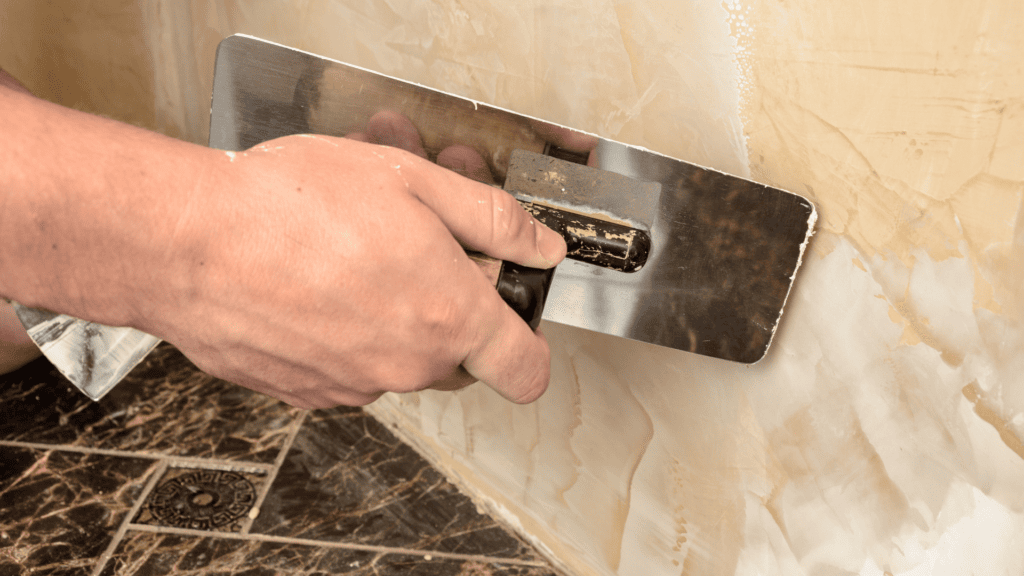
How To Pick The Right Venetian Plaster?
There are a few things to consider before diving headfirst into the world of plaster. Think about where you'll be using it, how you want it to look, what colour you want it to be, how much of a learning curve you're willing to take, and how much it will cost. You should ask yourself some of these questions to figure out what kind of plaster you need and whether or not you should look into other possibilities before you get started.
Where Exactly Will It Be Used?
The best plaster type depends on the injury or wound that needs to be treated. Plasters vary in their advantages and features. Therefore, it's important to consider your intended application before purchasing.
Which Style Do You Prefer? Matte Vs. Shiny
The lustre of Venetian plasters can range from matte to glossy. There are various possibilities ranging from matte to shine, each with its nuanced impacts to consider.
Which Shade Do You Prefer?
Having the plaster you buy pre-tinted by the manufacturer is the quickest and easiest way to give it a custom colour. Choosing a colour beforehand lets you visualise the finished product and relieves the pressure of determining what colours will look good together.
Which Do You Prefer, A Simple Task Or A Difficult One?
Knowing how much time and energy you're willing to put in will give you a better idea of what kinds of things to buy. For those on the fence about how much time and energy they are willing to commit, lime paint or lime wash could be the way to go.
What Is The Price?
The price of plaster might vary greatly from one product to the next. The price also differs depending on whether the product is pre-mixed or a dry mix. In the end, everything comes down to individual preference and how much groundwork one wants to put in.
Using Venetian Plaster Has Many Advantages
Venetian plaster adds a touch of class to your home's walls and ceilings, but it also has many practical uses.
In many respects, it excels over regular paint. Let's talk about the advantages of Venetian plastering.
Plaster's versatility makes it so appealing to homeowners undertaking renovation projects.
Environment Friendly
Venetian plaster is considered "green" due to the natural ingredients used in its production. As CO2 is absorbed by lime plaster, the benefits are doubled.
Your walls will become sturdy over time, and you'll breathe easier knowing you're trapping less carbon dioxide inside. Venetian plaster is non-toxic, while glues, acrylic paints, and sealants release harmful compounds (VOCs). Enabling moisture to evaporate reduces temperature and humidity on surfaces and in the surrounding air.
Last but not least, due to its alkaline composition, it acts as an antibacterial surface, reducing the risk of mould growth and improving the locals' health.
Long-Lasting
Plaster finishes in the Venetian style are sometimes called "lifetime finishes", with good reason. As was said before, the plaster hardens with time, making it less vulnerable to cracking and shrinking than cement coatings. Even while Venetian plaster initially costs more than paint, it saves money in the long run.
All-Round Uses
One other thing going in favour of Venetian plaster is its versatility. It sticks to a wide variety of surfaces—including preexisting interior walls and ceilings—making it a versatile material. Many architects also use it to adorn metal features like columns and arches.
Unlike wallpaper, which dries down and loses its adherent over time, decorative treatments don't start to peel off the wall.
Easy Maintenance
Polished Venetian plaster requires little upkeep. This decorative coating is combined with a wide variety of colours, so it will last very long without fading, and you won't have to whitewash the walls as often.
Cleaning and maintaining it is much simpler because it dries quickly and doesn't trap dust. To remove dust, wipe it down with a moist cloth.
How To Keep Venetian Plaster From Cracking?
If you want to keep your Venetian plaster from cracking, you can take these easy measures:
Use Expert Installers.
If you want authentic results, hire professional Venetian plaster installers. Your polished plaster will be installed properly thanks to their expertise; they will make sure each layer is cured and sanded before the next is applied and that all seams are sealed properly. As a result, your plastered walls and ceilings will be less likely to develop cracks.
Increase Safety Measures
Even the toughest materials will break after being struck. This means you need to be careful about where you put up your polished plaster. In high-traffic areas like hallways or retail stores, taking precautions to protect your polished plaster finish, especially around doors that open and close frequently, is a good idea. You can do this by putting up wall corner guards, installing door stops, and erecting protective edging around windows and doors.
Maintain A Low-Impact Approach To Cleaning
Following the correct upkeep practises for Venetian polished plaster is crucial. Don't use anything stronger than water or mild soap for cleaning. The marble-like surface is easily damaged by abrasive agents, making cracking more likely.
How To Fix Venetian Plaster Cracks?
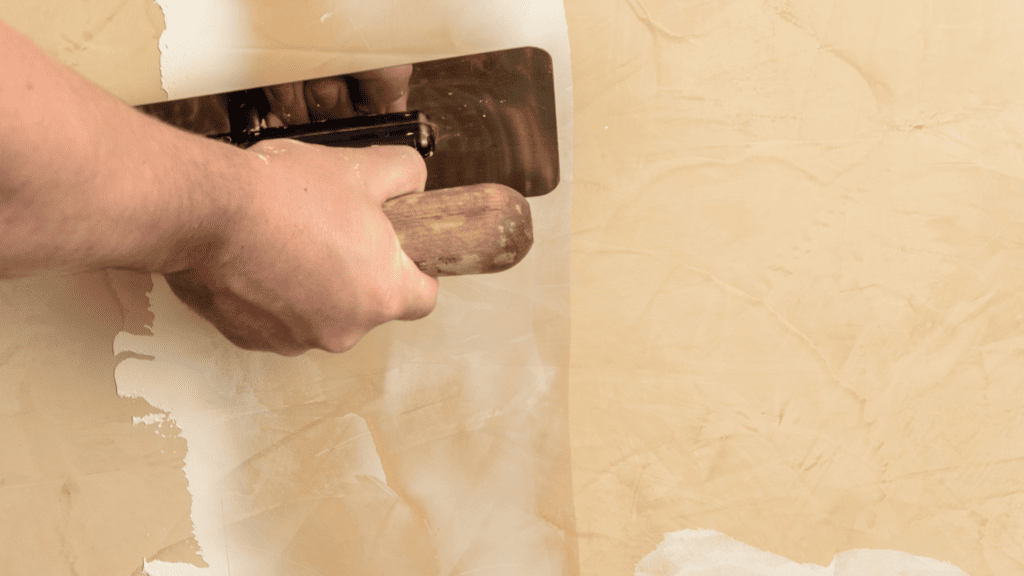
If your Venetian plaster walls or ceilings have developed cracks, it is recommended that you have professional Venetian plaster contractors make the necessary repairs. They will know exactly what to do to fix the cracks so that they no longer detract from the aesthetics of your interior and are far less likely to reappear in the future.
Repairing a polished plaster surface that has cracked professionally will be more expensive than doing it yourself, but it will restore the surface's original durability. There will be no "spackling over the holes" here.
Your second choice is to fix it yourself. However, you can expect some variation in the surface's finish, as blending in repairs is an art form in and of itself.
Conclusion
Venetian plaster, also known as marble plaster, polished plaster, marmorino, and stucco plaster, has been around for nearly 5,000 years and has its origins in the sea. It is made from limestone, which has been used for thousands of years as marine organisms decayed and settled on the seafloor. The Romans were major fans of Venetian plaster's ability to evoke the look of actual stone. In the mid-20th century, Italian architect Carlo Scarpa gave Venetian plaster a facelift by using it in his designs and experimenting with the technique, making it easier to apply and reducing the number of coats needed.
When using Venetian plaster, it is important to consider the location, desired appearance, color, learning curve, and cost before purchasing. The best plaster type depends on the injury or wound being treated. The lustre of Venetian plasters can range from matte to glossy, with various possibilities ranging from matte to shiny. Pre-tining the plaster by the manufacturer is the quickest and easiest way to give it a custom colour.
Choosing the right Venetian plaster depends on the user's time and energy commitment, and the price of the product may vary greatly depending on whether the product is pre-mixed or a dry mix. Venetian plaster has many advantages, including being environmentally friendly, long-lasting, and versatile. It can be applied to a wide variety of surfaces, including preexisting interior walls and ceilings, and is often used to adorn metal features like columns and arches. Polished Venetian plaster is a durable and easy-to-maintain decorative coating that lasts without fading and requires minimal upkeep. It is easy to clean and maintain, as it dries quickly and doesn't trap dust.
To prevent cracking, hire professional installers, increase safety measures, and follow proper upkeep practices. Protect the finish by installing wall corner guards, door stops, and protective edging around windows and doors. Maintain a low-impact approach to cleaning, using water or mild soap for cleaning. If cracks have developed, have professional contractors make necessary repairs to restore the surface's original durability. Repairing a cracked surface is more expensive but will restore the surface's original durability. Alternatively, you can fix the surface yourself, but expect some variation in the finish due to the art of blending in repairs.
Content Summary
- Venetian plaster is a high-end wall treatment with a fascinating history.
- It goes by various names like marble plaster, marmorino, and stucco plaster.
- The origins of Venetian plaster trace back nearly 5,000 years to limestone formations in the sea.
- Venetian plaster was used as early as the 1st century AD in Mesopotamia.
- Romans admired Venetian plaster for its stone-like appearance in cathedrals and villas.
- Carlo Scarpa, an Italian architect, modernized Venetian plaster with innovative techniques.
- The Banca Popolare di Verona showcases Carlo Scarpa's use of acrylic resins in architecture.
- Venetian plaster is composed of lime putty made from heated limestone.
- Lime putty is eco-friendly, hypoallergenic, and mold-resistant.
- Venetian plaster is applied in coats using rust-free trowels.
- Marmorino Tools offers high-quality trowels and tools for Venetian plaster application.
- Consider the application area and intended finish when selecting Venetian plaster.
- Choose between matte and glossy finishes for Venetian plaster.
- Pre-tinted plaster offers custom colors and ease of use.
- Consider the level of effort and time you're willing to invest in the application.
- The price of Venetian plaster can vary based on the product and preparation.
- Venetian plaster has numerous advantages over regular paint.
- It is considered environmentally friendly, absorbing CO2 and reducing VOCs.
- Venetian plaster hardens over time, making it long-lasting and less prone to cracking.
- Venetian plaster can be used on various surfaces, including metal features.
- Polished Venetian plaster requires minimal maintenance and is easy to clean.
- Use expert installers to prevent cracks and ensure proper installation.
- Take safety measures to protect the polished plaster in high-traffic areas.
- Follow low-impact cleaning practices to avoid damaging the surface.
- For cracks, professional repairs are recommended for best results.
- DIY repairs may be an option, but blending in repairs can be challenging.
- Venetian plaster adds class and elegance to walls and ceilings.
- The material is versatile and suitable for both renovations and new construction.
- Lime putty in Venetian plaster acts as an antibacterial surface.
- Venetian plaster can be applied in coats ranging from 1 mm to 3 mm.
- Marmorino Tools Elite Pro trowel helps achieve a clean finishing layer.
- Lime putty is made from calcium carbonate accumulated over thousands of years.
- Archaeological sites in Mesopotamia used Venetian plaster in the 1st century AD.
- Carlo Scarpa reduced the number of plaster coats needed from seven to three.
- Venetian plaster has been used on artificial structures in Malta.
- Lime putty in Venetian plaster is non-toxic and environmentally friendly.
- Venetian plaster is versatile, adhering well to various surfaces.
- Consider the intended application area before choosing the plaster type.
- Pre-tinted plaster provides convenience and custom color options.
- Venetian plaster hardens over time, becoming less prone to cracks.
- It is easy to clean and maintain, lasting longer than regular paint.
- Professional installers ensure proper curing and sealing, reducing cracks.
- Venetian plaster is suitable for use in high-traffic areas with precautions.
- Avoid using abrasive agents on polished Venetian plaster to prevent cracking.
- Venetian plaster repairs are best left to professionals for a seamless finish.
- DIY repairs may result in variations in the surface's appearance.
- Lime putty in Venetian plaster absorbs CO2, improving indoor air quality.
- The versatility of Venetian plaster makes it a preferred choice for architects.
- Venetian plaster enhances the durability of walls and ceilings over time.
- Lime putty in Venetian plaster resists mold growth, improving health conditions.
Frequently Asked Questions About Venetian Plaster
Yes, Venetian plaster can be tinted to different colours. Pigments can be added to the plaster mixture to achieve the desired shade. It is also possible to apply a coloured glaze over the plaster for additional effects.
Venetian plaster is relatively low-maintenance. It can be cleaned with a soft cloth or a mild soap solution. Avoid using abrasive cleaners or scrubbing the surface vigorously, as it can damage the plaster.
Yes, minor damages to Venetian plaster can be repaired. A skilled professional can patch and blend the damaged area to restore a smooth finish. However, extensive repairs may require reapplication of the plaster.
Venetian plaster is considered an environmentally friendly option compared to some other wall finishes. It is made from natural materials like lime and marble dust and doesn't release harmful chemicals into the air.
While attempting a DIY application of Venetian plaster is possible, it is a complex technique that requires skill and experience to achieve the desired results. It is recommended to hire a professional plasterer for the best outcomes.

